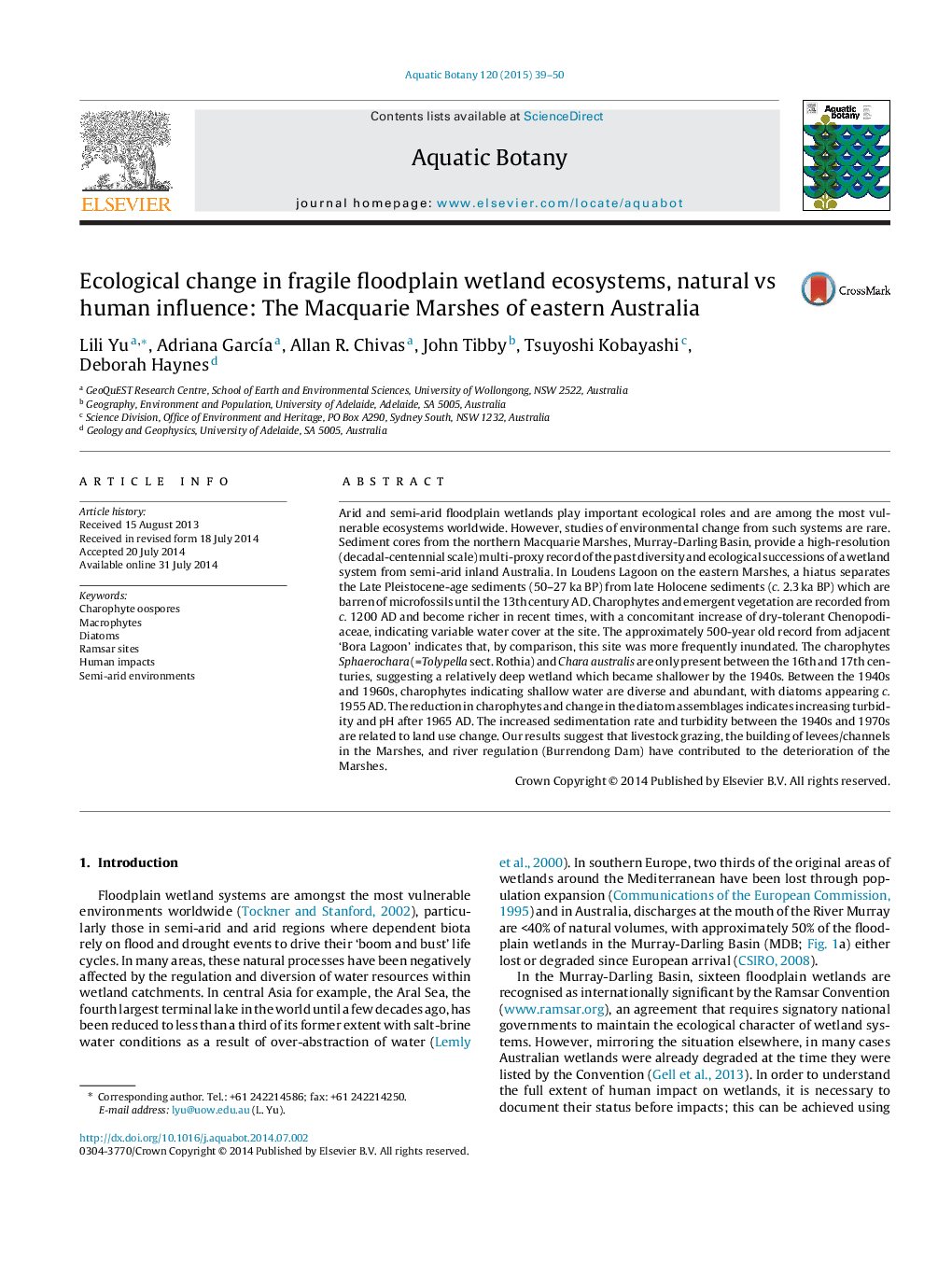| کد مقاله | کد نشریه | سال انتشار | مقاله انگلیسی | نسخه تمام متن |
|---|---|---|---|---|
| 4527734 | 1324258 | 2015 | 12 صفحه PDF | دانلود رایگان |
• Long-term high-resolution palaeolimnology of an internationally important wetland.
• Multi-proxy analysis from sediment cores unveiling past 50 ka history of wetlands.
• Reconstruction of ecological successions and ecosystem dynamics.
• Research into distinguishing climate changes from human-induced changes.
• Larger impact due to European settlement in the area since 1834 AD.
Arid and semi-arid floodplain wetlands play important ecological roles and are among the most vulnerable ecosystems worldwide. However, studies of environmental change from such systems are rare. Sediment cores from the northern Macquarie Marshes, Murray-Darling Basin, provide a high-resolution (decadal-centennial scale) multi-proxy record of the past diversity and ecological successions of a wetland system from semi-arid inland Australia. In Loudens Lagoon on the eastern Marshes, a hiatus separates the Late Pleistocene-age sediments (50–27 ka BP) from late Holocene sediments (c. 2.3 ka BP) which are barren of microfossils until the 13th century AD. Charophytes and emergent vegetation are recorded from c. 1200 AD and become richer in recent times, with a concomitant increase of dry-tolerant Chenopodiaceae, indicating variable water cover at the site. The approximately 500-year old record from adjacent ‘Bora Lagoon’ indicates that, by comparison, this site was more frequently inundated. The charophytes Sphaerochara (=Tolypella sect. Rothia) and Chara australis are only present between the 16th and 17th centuries, suggesting a relatively deep wetland which became shallower by the 1940s. Between the 1940s and 1960s, charophytes indicating shallow water are diverse and abundant, with diatoms appearing c. 1955 AD. The reduction in charophytes and change in the diatom assemblages indicates increasing turbidity and pH after 1965 AD. The increased sedimentation rate and turbidity between the 1940s and 1970s are related to land use change. Our results suggest that livestock grazing, the building of levees/channels in the Marshes, and river regulation (Burrendong Dam) have contributed to the deterioration of the Marshes.
Journal: Aquatic Botany - Volume 120, Part A, January 2015, Pages 39–50
